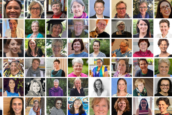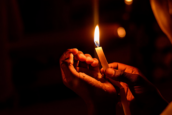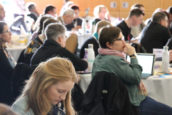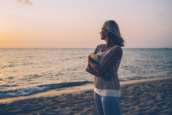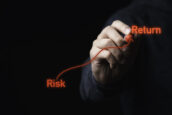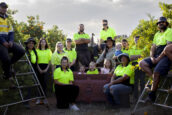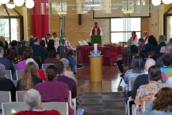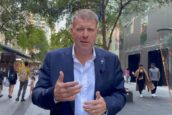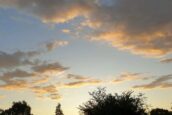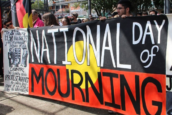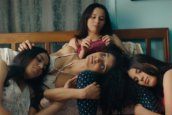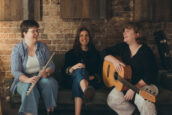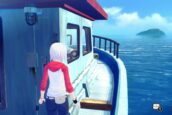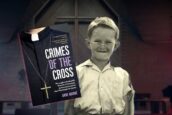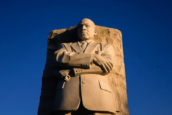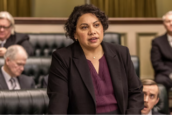
New Aboriginal and Torres Strait Islander suicide prevention program launched
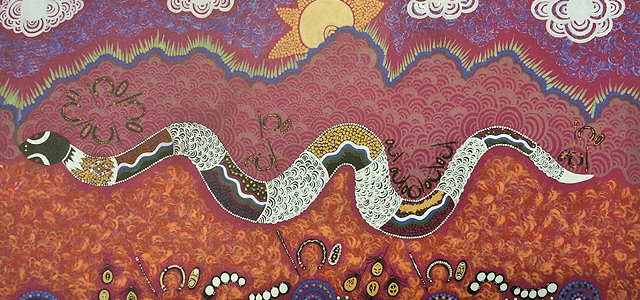
Pictured artwork by Bronwyn Smith – “Story Telling After The Gathering”
An innovative program designed to assist Indigenous communities in preventing suicide has been launched.
The new Aboriginal and Torres Strait Islander Wesley LifeForce Suicide Prevention Program is a culturally appropriate and tailored package for both Aboriginal and Torres Strait communities to facilitate discussion and spreading of information regarding suicide.
The launch coincided with the annual Wesley LifeForce Suicide Prevention Networks conference which is drawing more than 100 representatives from 60 local networks from across Australia.
Key to the program is that is it provides locally based solutions in many communities. The new program was launched by the CEO of Wesley Mission the Rev Dr Keith Garner AM.
“I think this a watershed in the community-based suicide work in Australia to launch today an Aboriginal and Torres Strait Islander Wesley LifeForce Suicide Prevention Program. Like so much of the work we do here at Wesley Mission, the work of suicide prevention is central to what it is that we are about.
“It began with the launch here at Wesley Mission of Lifeline when one of my predecessors Rev. Alan Walker was superintendent and so much of the inspiration that has led us to develop this particular program has its roots in that launch in 1963. New and innovative programs have continued to be at the heart of what we do. As Australia develops, as new needs arise so we have to be able to match those needs with appropriate services within the community.
“Although suicide was at one time largely unknown in the Aboriginal and Torres Strait Islander communities a few generations ago, now the suicide rate is approximately double it is in the non-Indigenous community. The impact of suicide is immeasurable, it affects whole communities. This means a whole of community response is the best way that we can meaningfully respond and provide pathways to help us to move forward.
“The more we talk about suicide the better. The impacts of suicide affect the whole community as we have heard, networks and pathways provide for the whole community and whole country. We have in many ways united in common pain where the level of suicide is far too high. Therefore we need communities to respond to it in their way.” said Dr Garner.
Wesley LifeForce commissioned The Seedling Group (TSG), an Aboriginal and Torres Strait Islander consultancy, to undertake development of the program, appropriate for an Indigenous audience.
Gayili Yunupingu who attended the launch is a senior traditional land owner and honorary chairperson of the Galupa Marngarr Suicide Prevention group in Nhulunbuy, Northern Territory. In 2007 the Gunyangara community had the highest pro rata suicide rate in the world. Members of the local community knew swift and strategic action needed to be taken. A suicide prevention group was formed and worked actively to prevent further deaths by suicide
Focus groups were initially held in three communities – Halls Creek in The Kimberley of Western Australia, Katherine in the Northern Territory and Thursday Island in the Torres Strait Islands in Queensland. Input from these community discussions was used to modify the original program to render the training more acceptable, suitable and culturally appropriate for Aboriginal and Torres Strait Island peoples. Workshop materials have been developed for both Aboriginal and Torres Strait Islander audiences and feature artwork from local artists: Storytelling after the Gathering by Bronwyn Smith and Waru Danalaig’ by Gessa Pilot.
Wesley LifeForce began in 1995 and has since delivered suicide prevention skills training to more than 30,000 people in metropolitan, regional, rural and remote Australia. The national program also establishes and supports the 60 suicide prevention community networks across Australia. These networks cover almost one-third of all Lower House seats in the Australian Parliament.
According to the Australian Bureau of Statistics an average of 5.2 per cent of Indigenous Australian deaths annually in 2009-2013 were from suicide. Indigenous suicide rates vary by state, with Western Australia and the Northern Territory having the highest rates.
Lisa Sampson








